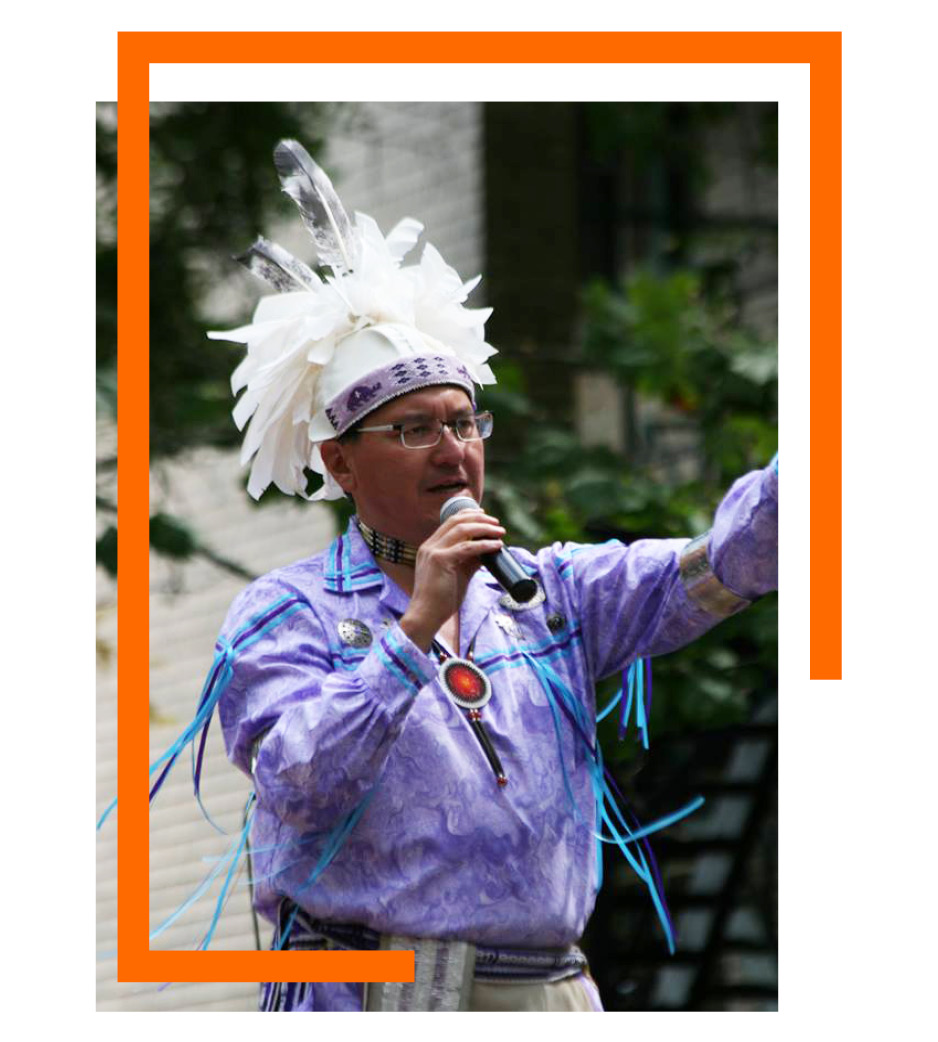How to Honor the Land on Which We Stand | November 2024
- RIT /
- Diversity and Inclusion /
- Newsletters /
- November 2024 /
- How to Honor the Land on Which We Stand

“We gather on the traditional territory of the Onöndowa'ga:' or “the people of the Great Hill.” In English, they are known as Seneca people, “the keeper of the western door.” They are one of the six nations that make up the sovereign Haudenosaunee Confederacy.
We honor the land on which RIT was built and recognize the unique relationship that the Indigenous stewards have with this land. That relationship is the core of their traditions, cultures, and histories. We recognize the history of genocide, colonization, and assimilation of Indigenous people that took place on this land. Mindful of these histories, we work towards understanding, acknowledging, and ultimately reconciliation.”
RIT’s Land Acknowledgement recognizes the space where RIT sits today in Henrietta. The idea came from Nicole Scott (Diné), a former director of the university’s Future Stewards Program. She proposed it in the spring of 2019. RIT leadership quickly agreed on its importance, with Division of Diversity and Inclusion Vice President and Associate Provost Keith Jenkins first reciting it at two DDI events held on campus. By that summer, RIT President David Munson had approved its use at major RIT events.
 Minett Professor Emeritus Perry Ground (Onondaga, Turtle Clan) says that recognition is important. He carries the title of “Traditional Storyteller and Cultural Educator” and is a prominent speaker and lecturer on the history of the Haudenosaunee. Ground says, “The land surrounding the RIT campus was rich with forests, waterways, fertile fields, and abundant wetlands hundreds of years ago. The Haudenosaunee utilized the plentiful resources of this area for all of their survival needs. Whether it was bark for house building, crops such as the Three Sisters (corn, beans, squash) for food, animal hides/furs for clothing, plants for medicine, or stones for tool making, the Haudenosaunee could find all that was needed from the land around them. Being thankful for these resources, while not overusing or abusing them, continues to be an important part of the Haudenosaunee belief system.”
Minett Professor Emeritus Perry Ground (Onondaga, Turtle Clan) says that recognition is important. He carries the title of “Traditional Storyteller and Cultural Educator” and is a prominent speaker and lecturer on the history of the Haudenosaunee. Ground says, “The land surrounding the RIT campus was rich with forests, waterways, fertile fields, and abundant wetlands hundreds of years ago. The Haudenosaunee utilized the plentiful resources of this area for all of their survival needs. Whether it was bark for house building, crops such as the Three Sisters (corn, beans, squash) for food, animal hides/furs for clothing, plants for medicine, or stones for tool making, the Haudenosaunee could find all that was needed from the land around them. Being thankful for these resources, while not overusing or abusing them, continues to be an important part of the Haudenosaunee belief system.”
He points to several ways the rich history and tradition of the Haudenosaunee continues to impact all of us.
“By recognizing the original inhabitants of the land where our campus now sits, we are reminded of the relationships between peoples of different cultures, the importance of preserving the land and resources around us, and the sometimes-difficult history that has shaped the people we all are today. The Haudenosaunee Great Law of Peace, which details how our Councils operate, was the first democracy in North America and helped influence the founders of the American system of government. The role of women within our Great Law was balanced with men to ensure equality among the genders; Haudenosaunee women influenced early American suffragists including Rochester's Susan B. Anthony. RIT has exceptional lacrosse teams, men and women’s, and they are playing a sport that was invented by the Haudenosaunee on the very lands where the RIT campus now sits. So, they are continuing a tradition on this land that is thousands of years old.”
Jenkins adds, “Today, the Land Acknowledgment is shared at all major RIT events and programs—Faculty Orientation, New Student Convocation, RIT Commencement, College Commencement Ceremonies, Expressions of King’s Legacy, Let Freedom Ring, just to name a few—to honor the land on which we stand and the people of the Great Hill.”
If you are interested in using RIT’s Land Acknowledgement video or script at one of your RIT events, you can view it here. If you would like to learn more about Indigenous history, culture, equality, and social justice you can also visit Ganondagan State Historic Site in Victor NY, or the Smithsonian's National Museum of the American Indian in Washington DC and New York City.



